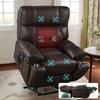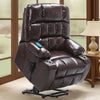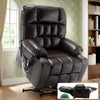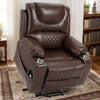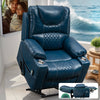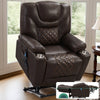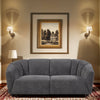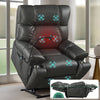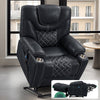Understanding Mid-Century Design and Its Impact on Furniture
The Origins of Mid-Century Aesthetics
Mid-century design emerged in the 1940s and flourished until the 1960s. It was born from a desire for simplicity and functionality after World War II. This style blends organic forms with new materials and techniques. Designers aimed to create practical, beautiful pieces for the modern home. They drew inspiration from the Bauhaus movement and Scandinavian design. The result was furniture that was both stylish and accessible to the average homeowner.

Key Features of Mid-Century Sofas
Mid-century sofas are known for their clean lines and minimalist approach. They often feature:
- Tapered legs
- Organic shapes
- Low-profile designs
- Bold colors or natural wood tones
- Tufted upholstery
- Mixing of materials like wood and metal
These sofas prioritize form and function. They have a timeless appeal that still works in today's homes. The focus on simplicity makes them versatile and easy to pair with other decor styles.
The Evolution of Mid-Century Furniture in the United States
In the U.S., mid-century furniture gained popularity after World War II. The economic boom led to new housing developments and a need for modern furnishings. Designers like Charles and Ray Eames, George Nelson, and Florence Knoll became household names. They created iconic pieces that defined the era. As the style evolved, it incorporated elements of pop art and space-age design. This led to more experimental forms and use of new materials like plastic and fiberglass.
Selecting the Right Mid-Century Sofa for Your Home
Determining the Perfect Size and Shape
Choosing the right size and shape for your mid-century sofa is crucial. Consider the scale of your room and existing furniture. Measure your space carefully before making a purchase. Mid-century sofas come in various shapes:

- Straight-lined sofas for a classic look
- Curved or L-shaped sectionals for larger spaces
- Compact loveseats for smaller rooms
Remember that mid-century design favors open spaces. Choose a sofa that allows for easy movement around it. The shape should complement your room's layout and enhance its functionality.
Material and Texture Considerations
The materials used in mid-century sofas contribute greatly to their appeal. Common options include:
- Leather for a sleek, sophisticated look
- Wool or tweed for texture and warmth
- Velvet for a touch of luxury
- Cotton or linen for a more casual feel
Consider durability and maintenance when choosing materials. Leather is easy to clean but may show wear over time. Fabrics offer more color options but may require more upkeep. Texture can add depth to your decor. Mix smooth surfaces with rougher textures for visual interest.
Incorporating Mid-Century Sofas into Various Decor Styles
Mid-century sofas are versatile and can work in many decor styles. In a modern setting, they add a touch of retro charm. In a traditional room, they can serve as a striking focal point. To blend styles:
- Pair with contemporary art for an eclectic look
- Use mid-century accent pieces to create cohesion
- Add throw pillows in current patterns to update the look
- Combine with natural elements like plants for a bohemian vibe
The key is to balance the sofa with your existing decor. Let its clean lines complement other elements in your space. Don't be afraid to mix eras for a unique, personalized look.
The Longevity and Value of Mid-Century Sofas
Investing in Quality: Why Mid-Century is Worth It
Investing in a quality mid-century sofa is a smart choice for several reasons:

- Durability: These pieces are built to last, often featuring solid wood frames.
- Timeless design: The style remains popular, reducing the need for frequent updates.
- Versatility: They work well with various decor styles, adapting as your tastes change.
- Comfort: Many designs prioritize ergonomics and comfort for daily use.
While the initial cost may be higher, the longevity of these pieces often makes them more economical in the long run. They can become cherished family heirlooms, passed down through generations.
The Resale Value of Mid-Century Furniture
Mid-century furniture, including sofas, often retains its value well. Authentic pieces from renowned designers can even appreciate over time. Factors affecting resale value include:
- Designer or manufacturer reputation
- Condition of the piece
- Rarity of the design
- Current market trends
Well-maintained mid-century sofas can be a good investment. They appeal to collectors and design enthusiasts alike. Even reproductions of classic designs can hold their value if they're high quality.
Care and Maintenance for Lasting Beauty
Proper care is essential to maintain the beauty and value of your mid-century sofa. Here are some tips:
- Regular vacuuming to remove dust and debris
- Prompt cleaning of spills to prevent stains
- Use of appropriate cleaners for the material
- Rotating cushions to ensure even wear
- Keeping the sofa out of direct sunlight to prevent fading
For leather sofas, use a leather conditioner periodically. For fabric upholstery, consider professional cleaning once a year. Address any repairs promptly to prevent further damage. With proper care, your mid-century sofa can remain a stunning piece in your home for many years to come.








